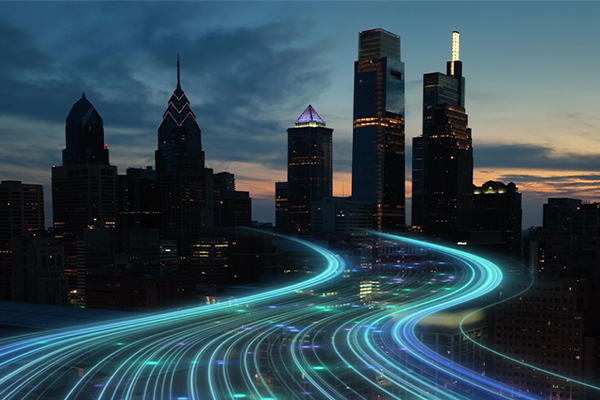Major Infrastructure Push to Strengthen Delhi-Gurugram Connectivity
The National Capital Region Planning Board (NCRPB) has announced an ambitious plan to expand and upgrade critical roads connecting Delhi and Gurugram. This strategic move is aimed at reducing traffic congestion, cutting travel time, and improving overall transportation infrastructure in one of India’s busiest and most economically significant corridors.
Multi-Crore Road Expansion Proposal Approved

The NCRPB, under the Union Ministry of Housing and Urban Affairs, has estimated a cost of approximately ₹1,500 crore for the comprehensive road expansion project. The project, which is now in its advanced planning stage, will see the development of several key arterial roads linking Delhi to Gurugram.
According to officials, this project is crucial to enhancing mobility and economic activity across the Delhi-NCR region, particularly for the daily commuters traveling between the two cities.
Key Roads Slated for Expansion
1. Mehrauli-Gurugram Road
The Mehrauli-Gurugram Road, which currently serves as a vital connector between South Delhi and Gurugram, will undergo significant widening. The plan includes converting this road into an eight-lane express corridor to facilitate smoother and faster vehicular movement.
2. Old Delhi-Gurugram Road
The Old Delhi-Gurugram Road is also set to be widened, with provisions for dedicated service lanes and pedestrian pathways. This move is expected to reduce bottlenecks that often plague this stretch, especially during peak hours.
3. Southern Peripheral Road (SPR)
A major portion of the expansion efforts will focus on the Southern Peripheral Road (SPR), a critical bypass that connects Golf Course Road Extension and NH-48. SPR is set to be expanded to a six-lane highway with improved junctions and flyovers to ease traffic flow.
Project Timeline and Phased Implementation
The NCRPB plans to execute this mega-project in multiple phases over the next five years. The first phase will prioritize roads facing severe congestion, with immediate focus on the Mehrauli-Gurugram Road and Southern Peripheral Road.
Subsequent phases will address other key links and associated infrastructure, including underpasses, flyovers, and road overbridges, to ensure seamless travel between Delhi and Gurugram.
Impact on Commuters and Businesses
Reduced Travel Time
Once completed, the expanded roads are expected to cut travel time between Delhi and Gurugram by up to 30%, significantly improving the daily commute for thousands of office-goers, students, and other travelers.
Economic Upliftment
The road upgrades are also poised to boost local businesses, logistics, and real estate along these corridors. Enhanced connectivity will attract more investments and facilitate smoother goods movement, thereby bolstering the economy.
Improved Safety and Accessibility
The NCRPB has also emphasized that the new infrastructure will include dedicated pedestrian zones, cycling tracks, and modern safety features such as better lighting and traffic management systems.
Collaborative Effort Between Agencies
The project is being jointly undertaken by the NCRPB, National Highways Authority of India (NHAI), Haryana Public Works Department (PWD), and the Delhi Development Authority (DDA). Regular consultations are being held to streamline coordination and ensure timely project delivery.
Officials have indicated that detailed project reports (DPRs) are already underway and environmental clearances will be prioritized to avoid unnecessary delays.
Expert Opinions on the Project
Urban Planners Weigh In
Urban development experts have welcomed the NCRPB’s move, highlighting that Delhi-Gurugram remains one of the most congested traffic corridors in North India.
According to Anil Sharma, an urban mobility consultant, “The expansion will not only ease vehicular pressure but also create a more resilient and efficient transportation network. It is a much-needed intervention to meet the demands of the growing population and rising vehicle density.”
Concerns Over Environmental Impact
However, some environmentalists have expressed concerns regarding the potential impact of road widening on green cover and urban ecosystems. Activists are urging authorities to integrate sustainable practices such as tree transplantation, rainwater harvesting, and the creation of green belts along the expanded roads.
Delhi-Gurugram A Crucial Economic Corridor
Delhi and Gurugram share one of the most critical urban links in India, with Gurugram being a major IT and corporate hub. According to government data, more than 300,000 vehicles ply between the two cities daily, contributing to heavy traffic congestion, air pollution, and road safety concerns.
The NCRPB’s project is part of a broader initiative to modernize NCR’s infrastructure, complementing other ongoing projects such as the Dwarka Expressway and the Delhi-Mumbai Industrial Corridor (DMIC).
Future Prospects and Sustainable Development
The authorities have reassured that sustainability will remain a core focus throughout the project lifecycle. Efforts will be made to incorporate eco-friendly materials, smart traffic monitoring systems, and provisions for electric vehicle (EV) charging stations along these upgraded corridors.
The NCRPB has also hinted at integrating future-ready technologies, including intelligent traffic management systems (ITMS) and automated tolling mechanisms, to further enhance efficiency.
The NCRPB’s planned expansion of key roads connecting Delhi and Gurugram marks a significant milestone in NCR’s urban infrastructure development. By addressing longstanding traffic woes and improving connectivity, the project promises to make daily commuting safer, faster, and more convenient.
With phased implementation and a focus on sustainable development, the upgraded corridors are set to become a model for modern urban infrastructure in India.




